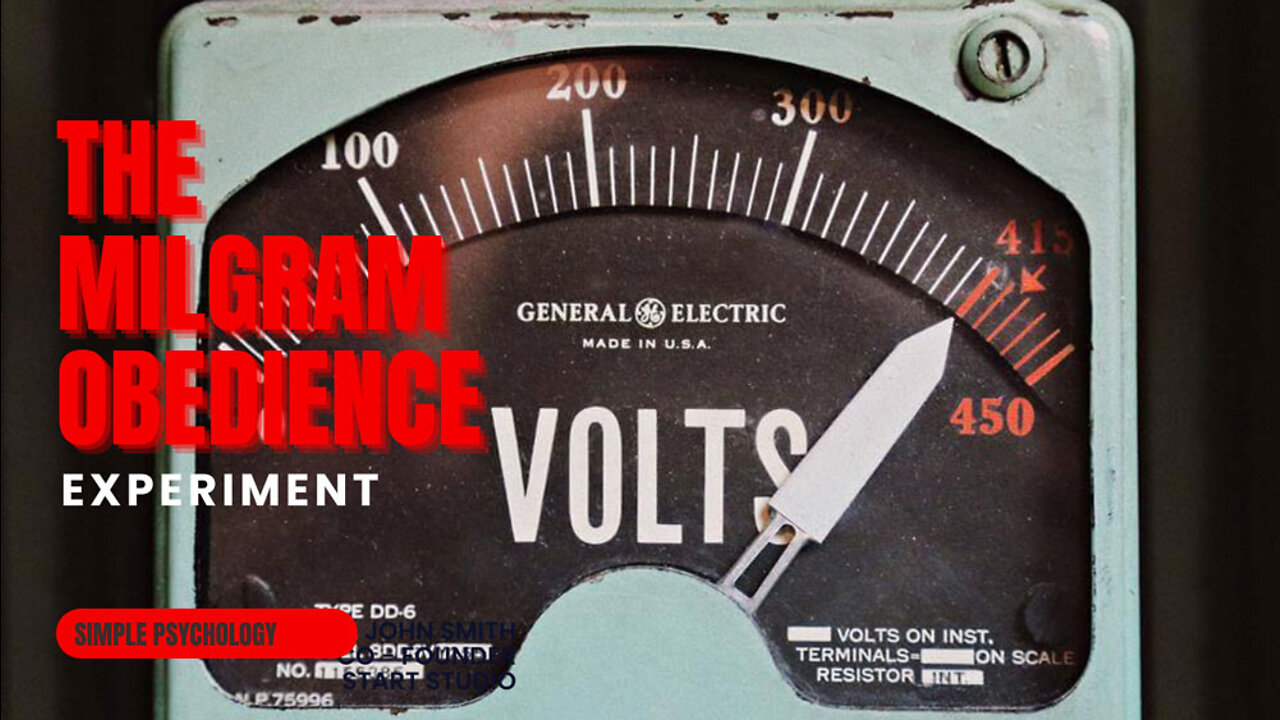Premium Only Content

The Milgram Obedience Experiment: Jaw-Dropping Sheeple Psychology
Milgrams Experiment on Obedience to Authority
Gregorio Billikopf Encina
University of California
Why is it so many people obey when they feel coerced? Social psychologist Stanley Milgram researched the effect of authority on obedience. He concluded people obey either out of fear or out of a desire to appear cooperative--even when acting against their own better judgment and desires. Milgram�s classic yet controversial experiment illustrates people's reluctance to confront those who abuse power. It is my opinion that Milgram's book should be required reading (see References below) for anyone in supervisory or management positions.
Milgram recruited subjects for his experiments from various walks in life. Respondents were told the experiment would study the effects of punishment on learning ability. They were offered a token cash award for participating. Although respondents thought they had an equal chance of playing the role of a student or of a teacher, the process was rigged so all respondents ended up playing the teacher. The learner was an actor working as a cohort of the experimenter.
"Teachers" were asked to administer increasingly severe electric shocks to the "learner" when questions were answered incorrectly. In reality, the only electric shocks delivered in the experiment were single 45-volt shock samples given to each teacher. This was done to give teachers a feeling for the jolts they thought they would be discharging.
Shock levels were labeled from 15 to 450 volts. Besides the numerical scale, verbal anchors added to the frightful appearance of the instrument. Beginning from the lower end, jolt levels were labeled: "slight shock," "moderate shock," "strong shock," "very strong shock," "intense shock," and "extreme intensity shock." The next two anchors were "Danger: Severe Shock," and, past that, a simple but ghastly "XXX."
In response to the supposed jolts, the "learner" (actor) would begin to grunt at 75 volts; complain at 120 volts; ask to be released at 150 volts; plead with increasing vigor, next; and let out agonized screams at 285 volts. Eventually, in desperation, the learner was to yell loudly and complain of heart pain.
At some point the actor would refuse to answer any more questions. Finally, at 330 volts the actor would be totally silent-that is, if any of the teacher participants got so far without rebelling first.
Teachers were instructed to treat silence as an incorrect answer and apply the next shock level to the student.
-
 16:25
16:25
The Aquarius Bus
10 months agoSalt Lake City, Utah. 1860. Built or Found? Again, where are the people?
2K6 -
 8:19
8:19
MattMorseTV
7 hours ago $0.90 earnedTrump is ACTUALLY DOING IT.
3.82K20 -
 LIVE
LIVE
ZWOGs
9 hours ago🔴LIVE IN 1440p! - Tarkov w/ Casey & crgoodw1n, Kingdom Come Deliverance, & More - Come Hang Out!
74 watching -
 LIVE
LIVE
We Like Shooting
13 hours agoWe Like Shooting 625 (Gun Podcast)
151 watching -
 1:45:02
1:45:02
Glenn Greenwald
4 hours agoIsrael Slaughters More Journalists, Hiding War Crimes; Trump's Unconstitutional Flag Burning Ban; Glenn Takes Your Questions | SYSTEM UPDATE #504
87.9K89 -
 1:29:31
1:29:31
Killerperk
1 hour agoRoad to BF6. Come hang out #regiment #bf6
1.35K1 -
 LIVE
LIVE
Jokeuhl Gaming and Chat
2 hours agoDARKTIDE - Warhammer 40k w/ Nubes Bloobs and AoA
46 watching -
 LIVE
LIVE
Cripiechuccles
3 hours ago😁💚💙MOTA MONDAY WITH CRIPIE💚💙 👌SMOKING, GAMING & WATCHING FLICKS!:😁
38 watching -
 36:11
36:11
Stephen Gardner
2 hours ago🔥'Burn ALL TRUMP FLAGS’ says Tim Walz + Democrat CAUGHT rigging own election!
9.58K8 -
 10:10
10:10
robbijan
1 day agoHollywood’s Hidden Messages: Predictive Programming & What’s Next
9.56K9